I have an admission to make: in my earlier years, I sang for a brief time in a Barbershop Quartet, and I must say, it was an absolutely unforgettable experience.
I vividly recall a variety show that I participated in with my group, where we chose for our single number the legendary “Lida Rose” from The Music Man musical of the late ’50s and early ’60s (the movie came out in 1962).
I can’t say that I ever took barbershopping for granted, but I didn’t fully appreciate how amazing an art form it was until a group of students from Germany – all musicians – came up to us afterward absolutely gushing about this “new” type of music they had never heard of before. I was astonished at their astonishment!
But it taught me something about the way in which fresh eyes and ears often grasp things in their pure form that we are blind to. For those of us who grew up watching The Music Man, Barbershop was a regular, if quaint and fascinating, part of our culture.
For those hearing it for the first time, however, it was pure amazement. And for that reason, I think this little piece of Americana is a sacred window of beauty in its own right.
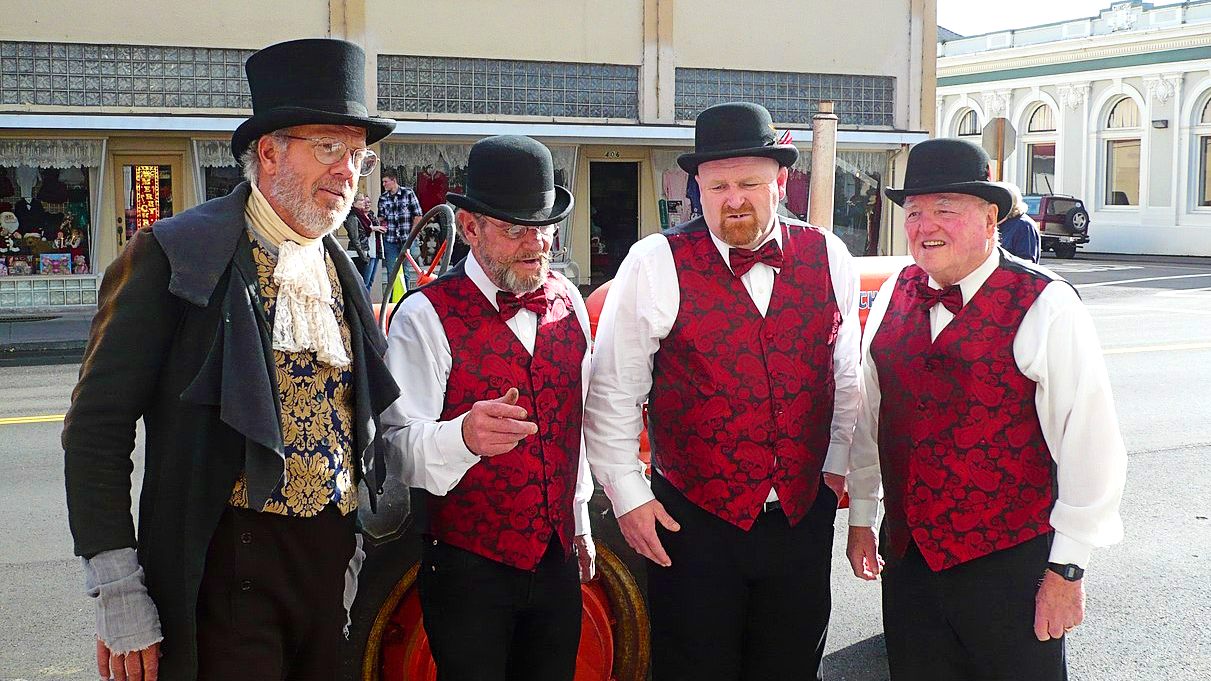
A Dying Art?
As to the question of whether this is a dying art, the Germans would answer with a resounding NEIN! Not only is Barbershop Quartet singing not a dying art, according to Marty Monson, the CEO of the largest Barbershop organization in the world, it is the greatest thing happening: “a capella music is one of the world’s hottest art forms,” he said recently. (His assessment includes not only Barbershop but all types of choral singing.)
But to understand the unique performance culture of Barbershop, we first have to define a few terms, and then I’ve placed some video links below if you wish to see and hear it firsthand.
The Genre
What is a capella music? This term that describes the secular art form of Barbershop Quartet singing actually comes from centuries of Catholic religious music. The word “capella” means “chapel” in Latin and Italian. Reminiscent of monks chanting in the darkened spaces of a monastic church, a capella describes any type of singing unaccompanied by instruments. In other words, pure vocal music.
As you might imagine, there are many forms of sacred a capella music, but my hands-down favorite is that performed by the group Voces8, which I encourage you to listen to sometime when you can spare several hours of captivating listening.
The Name
Where did the name “barbershop” come from? Supposedly it describes an old cultural practice where men stood around on street corners and in barbershops singing in four-part harmony (prior to the television era…obviously). Interesting, right?
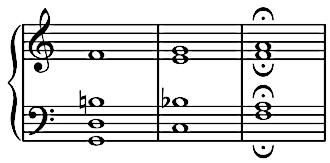 Then, the publication of the 1910 sheet music song, “Play That Barber Shop Chord” gave the genre a permanent name in the history of American musical styles. That 1910 piece was instrumental, but the “chord” it referred to was the typical harmonic chord that is innate to Barbershop music.
Then, the publication of the 1910 sheet music song, “Play That Barber Shop Chord” gave the genre a permanent name in the history of American musical styles. That 1910 piece was instrumental, but the “chord” it referred to was the typical harmonic chord that is innate to Barbershop music.
The Harmonic Seventh Chord is what creates the incredibly complex and beautiful harmonies of Barbershop singing. The mechanics of it are too much for me to grasp (my musical career actually never took off), but the barbershop “sound” consists of “anywhere from 35 to 60 percent dominant seventh chords to sound ‘barbershop’—and when they do, barbershoppers speak of being in ‘seventh heaven.’”(*)
You’ll hear a perfect illustration of this chord progression in the “Ice Cream” clip below.
The Barbershop Harmony Society
In the latter half of the 20th century, American culture was changing so quickly and drastically that the tradition of singing on street corners or in barbershops was rapidly going by the wayside. The music culture changed radically too. Since the 1960s, the whole western world has experienced an utter explosion of musical styles – most of them awful.
The group whose mission is to preserve what a few decades ago was considered a dying art is known as “The Society for the Preservation and Encouragement of Barbershop Quartet Singing in America” – whew – known by its acronym SPEBSQSA (pronounced, speb-squa).
You can see why they changed their name to the Barbershop Harmony Society (BHS) in 2005! This group is not only determined to preserve the legacy of one of America’s greatest art forms but also to expand it.
I encourage you to access the YouTube page for the BHS, and click on the first video. In the first 30 seconds of it you will hear one tenor hold a sustained high note for 25 seconds – it is just amazing! The page features videos of all their competitions. Wow.
Needless to say, the tradition of pure, glorious, four-part harmonious Barbershop singing is very much alive and well in the Barbershop Harmony Society of today.
A Brief History of Barbershop
A quick sketch of the history of this wonderful institution shows how it has grown like a robust flowering plant in the rich soil of American culture and, despite some ebbs and flows, is still one of the most wholesome bits of entertainment around.
1800s – The barbershop style has its roots in the vocal traditions of the African-American culture in the late 1800s and early 1900s.
Early 1900s – With no formal definition or organization, the style of music grew and flourished in American vaudeville culture.
1924 and 1936 – Norman Rockwell featured Barbershop Quartets on the cover of the Saturday Evening Post.
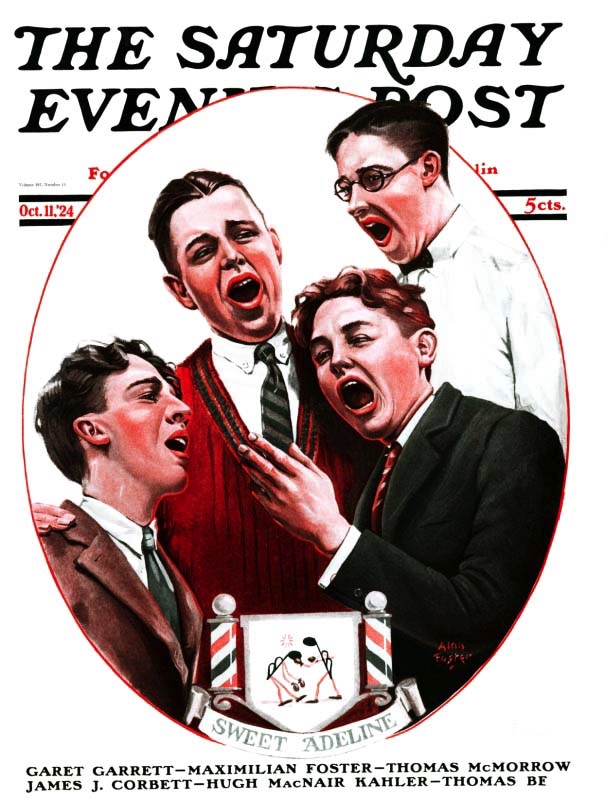
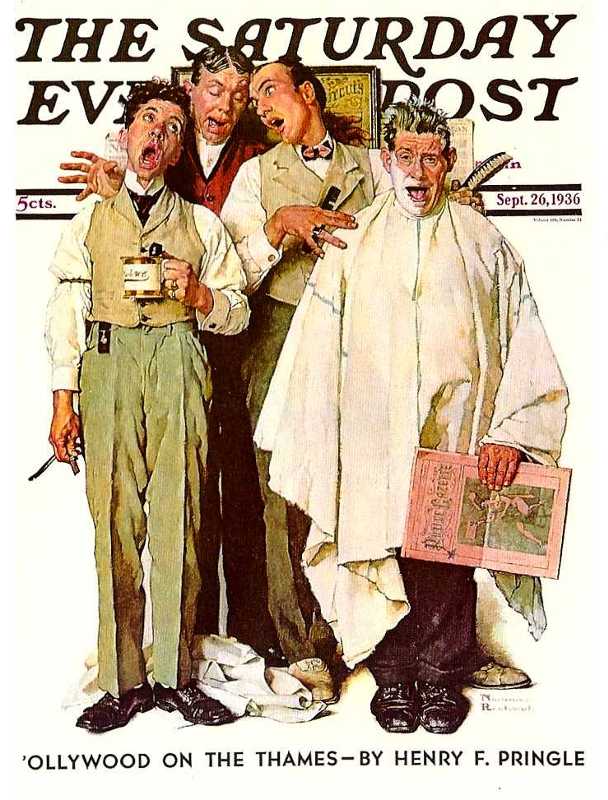
1938 – The SPEBSQSA itself was born on the occasion of a songfest in Tulsa, Oklahoma and became a national phenomenon after that with annual competitions and performances before ever-expanding audiences.
1941 – The first publication of the Barbershop singing magazine, The Harmonizer, which is still being published after 80 years!
1945 – SPEBSQSA formed a women’s branch called the Sweet Adelines.
1940s – The society went international, establishing affiliates in at least eleven countries.
1950 – The most famous American Barbershop Quartet, the Buffalo Bills, won the 1950 Quartet Championship.
1952 – SPEBSQSA included choral singing in the Society’s mission.
1953 – The Society initiated the International Chorus Competition.
From 1957-62 – The Buffalo Bills gave over 1500 Broadway performances in Meredith Wilson’s musical, The Music Man.
1960s and 70s – Barbershop singing was on the wane with the proliferation of other musical genres.
1992 – Establishment of the Collegiate Barbershop Competition, which later added high school and other Youth contests.
2005 – SPEBSQSA changed its name to the Barbershop Harmony Society and moves its HQ from Minneapolis to Nashville.
Famous Barbershoppers
Some of these famous names, familiar to most Americans, have a history in Barbershop Quartet singing:
- Harry S. Truman (33rd President of the United States)
- Alfred E. Smith (Former Governor of New York and presidential candidate in the 1920s)
- The Chordettes (a popular American female singing quartet, best known for their hit songs “Mr. Sandman” and “Lollipop”)
- Bing Crosby
- Burl Ives
- Groucho Marx
- George Mikan Jr. (6′ 10″ center of the NBA Minneapolis Lakers), and
- Trent Lott (US Senator from MS who was part of a quartet on Capitol Hill called The Singing Senators.)
There are others whose contributions to the Barbershop art form have earned them honorary memberships in the Society such as Dick Van Dyke and Meredith Wilson (author and composer of The Music Man) – rightly so!
Comedic Bent
Barbershop Quartets are known to ham it up on stage as you can see from this fun women’s quartet who perform an extremely clever ditty called “Why Haven’t I Heard from You?” [Incidentally, the BHS YouTube page has a whole category of Comedy performances.]
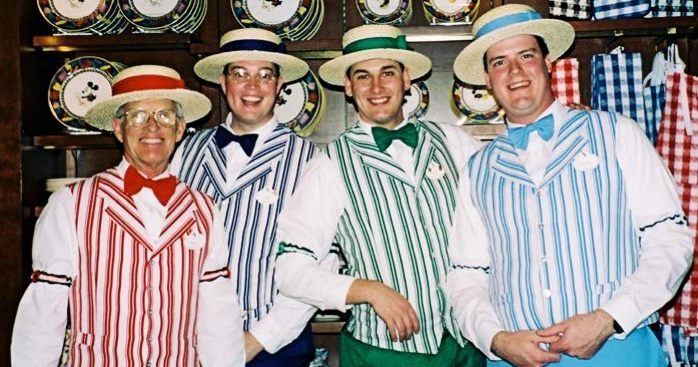
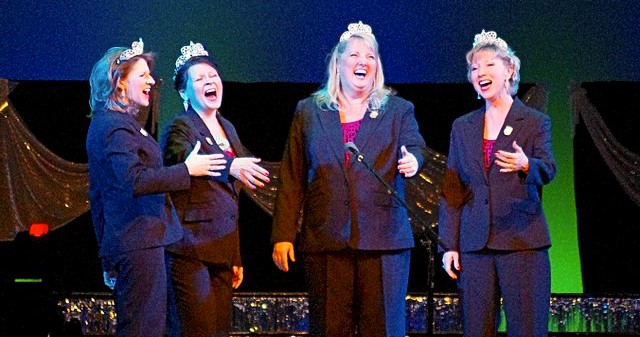
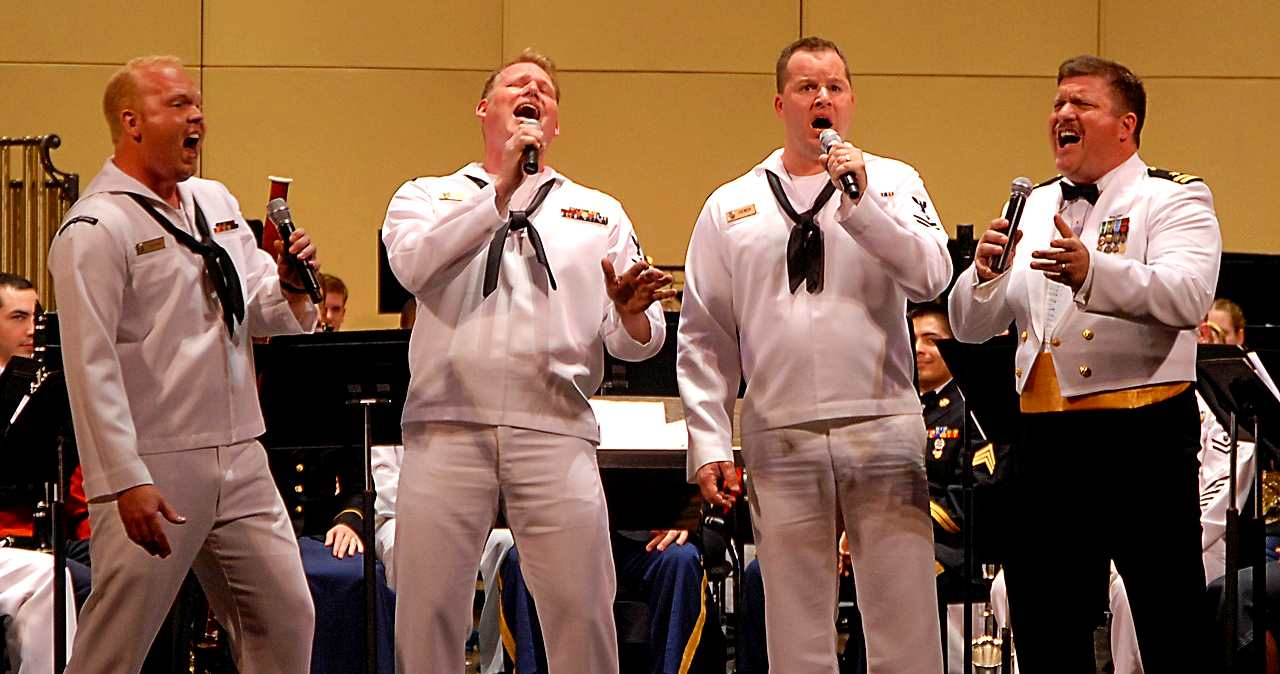
The comedic bent of Barbershop is probably best displayed in their sometimes hilarious names which abound in painful puns and word plays. All of the names below appeared in recent editions of The Harmonizer magazine:
The Love Notes; Dapper Dans (the roving quartets in Disney theme parks); Magnificent Sevenths; Eight Feet Wide (four singers, eight feet!); Choo Choo Chorus (you guessed it: they’re from Chattanooga); Moxie Ladies Quartet; Whatever Four; and Re[Choir]ed (a San Diego high school choir).
There are quartets just for seniors too: The Four Rascals; Wow! Time Flies; Six Feet Off Bass; Four Love or Money; and One Foot in the Stave (British group, a staff/stave is a musical notation that plays on the word “grave”).
My all-time favorites, though, are these: Hot Air Buffoons; The Four Bettys; Mixed Meta4; The Chordon Bleus; Duly Noted; and Here Comes Treble!
Speaking of Four-Part Harmony
Well, no survey of Barbershop would be complete without a few numbers from the most famous of all Barbershop Quartets. The two clips below will knock your socks off. The Germans may have Bach and Beethoven…but we have The Buffalo Bills.
———-
[Note: This article is a reproduction of the Sacred Windows Email Newsletter of 8/7/22, so it does not end with the regular Soul Work section. Please visit our Newsletter Archives.]
(*) Wikipedia, “Harmonic Seventh Chord”, referencing Averill, Gage (2003). Four Parts, No Waiting: a Social History of American Barbershop Harmony, p.205
Images: Wikimedia Commons.

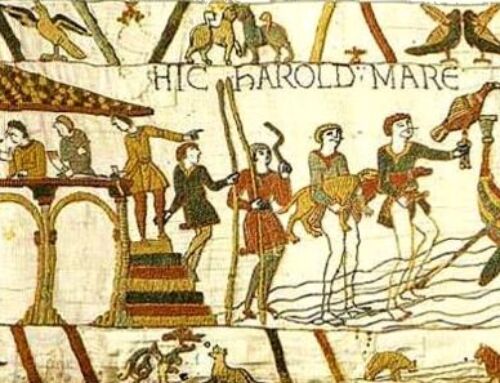

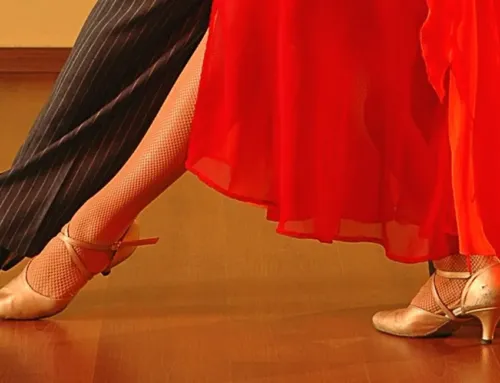
My favorite all time movie bar none. Robert Preston, Shirley Jones and the Buffalo Bills were at the top of their games in 62. No one could do it better. And of course who could forget little Winthrop Paroo….Amerilithhhh. Ron Howard. Thanks for the walk down memory lane.